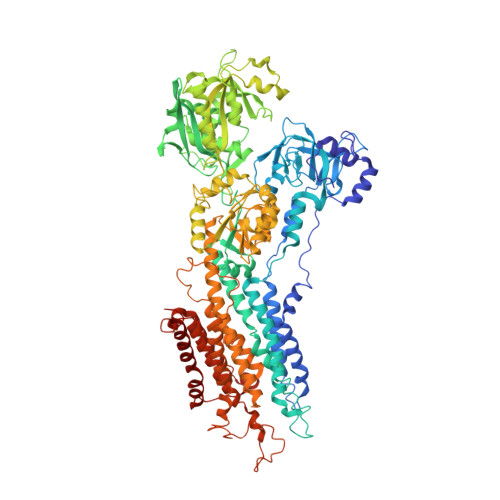Dephosphorylation of the Calcium Pump Coupled to Counterion Occlusion
Olesen, C., Sorensen, T.L.S., Nielsen, R.C., Moller, J.V., Nissen, P.(2004) Science 306: 2251-2255
- PubMed: 15618517
- DOI: https://doi.org/10.1126/science.1106289
- Primary Citation of Related Structures:
1XP5 - PubMed Abstract:
P-type ATPases extract energy by hydrolysis of adenosine triphosphate (ATP) in two steps, formation and breakdown of a covalent phosphoenzyme intermediate. This process drives active transport and countertransport of the cation pumps. We have determined the crystal structure of rabbit sarcoplasmic reticulum Ca2+ adenosine triphosphatase in complex with aluminum fluoride, which mimics the transition state of hydrolysis of the counterion-bound (protonated) phosphoenzyme. On the basis of structural analysis and biochemical data, we find this form to represent an occluded state of the proton counterions. Hydrolysis is catalyzed by the conserved Thr-Gly-Glu-Ser motif, and it exploits an associative nucleophilic reaction mechanism of the same type as phosphoryl transfer from ATP. On this basis, we propose a general mechanism of occluded transition states of Ca2+ transport and H+ countertransport coupled to phosphorylation and dephosphorylation, respectively.
Organizational Affiliation:
Centre for Structural Biology, Department of Molecular Biology, University of Aarhus, Gustav Wieds Vej 10C, DK-8000 Aarhus C, Denmark.


















